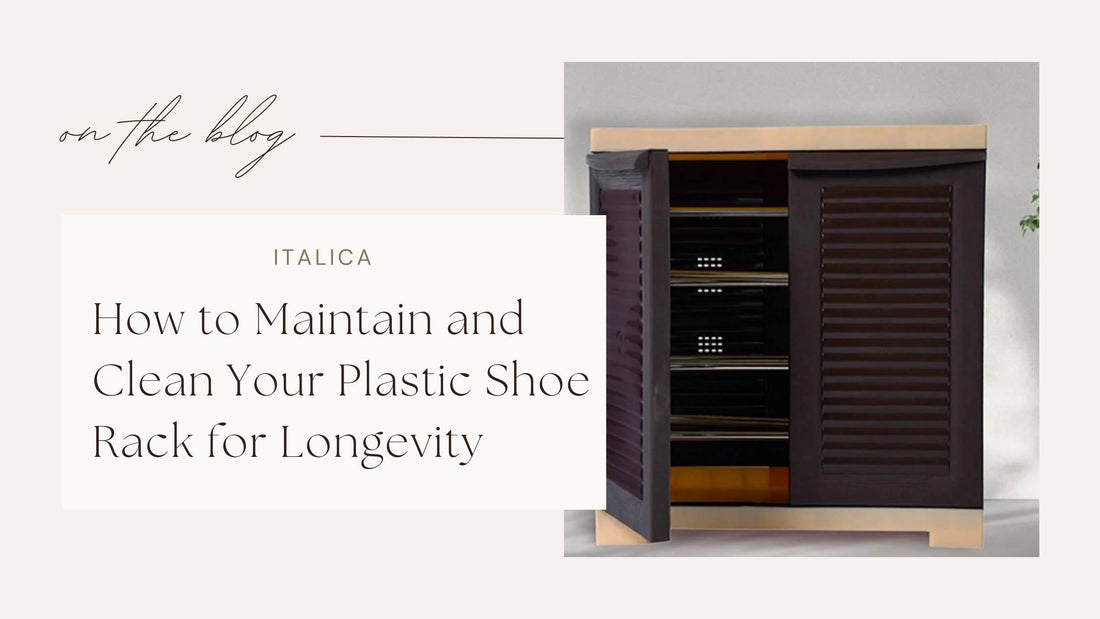
How to Maintain and Clean Your Plastic Shoe Rack for Longevity
Share
Why You Should Read This
If you own a plastic shoe rack, you want it to last. The problem? Dust, stains, and careless handling can cut its life short. The good news: with just a few simple habits, you can extend its lifespan for years.
This guide gives you the 20% of actions that drive 80% of results. No theory. Just simple steps you can use today to keep your plastic shoe rack strong, clean, and organized.

What We’ll Cover
Here’s exactly what you’ll learn:
- Why cleaning your plastic shoe rack regularly matters
- How to clean it step-by-step (fast and easy)
- Mistakes that shorten its lifespan
- Real-life stories of people who got more out of their racks
- Testimonials from users who swear by plastic shoe racks
Real-Life Stories
Story 1: The Dust Problem
Ravi from Mumbai bought a plastic shoe rack for his family of four. Within three months, the rack looked old and dull because no one cleaned it. Shoes tracked in dust and mud daily.
Here’s what changed: he started wiping the rack once a week with a damp cloth. In less than 10 minutes, the rack looked new again. Six months later, the rack was still sturdy and spotless.
Takeaway: Regular quick wipes prevent long-term damage.
Story 2: The Overload Trap
Priya thought her plastic shoe rack could hold anything. She stacked heavy boots and bags on top of it. Within weeks, the rack bent in the middle.
After replacing it, she learned to store only lightweight items in the rack and keep heavy things off. Her second rack has lasted two years without issues.
Takeaway: Respect the weight limit. Plastic racks are tough but not indestructible.
Story 3: The Stain Fix
Akash’s rack turned yellow from constant exposure to sunlight. He thought he had to buy a new one. A neighbor suggested moving it indoors and cleaning with baking soda paste.
The stains faded, and the rack regained its color. Now he places it in a shaded corner near his door.
Takeaway: Keep your plastic shoe rack out of direct sunlight to avoid discoloration.
How to Maintain and Clean Your Plastic Shoe Rack (Step-by-Step)
Think of your plastic shoe rack like your car. Small regular checkups prevent big problems later. Here’s the exact system:
Step 1: Empty the Rack
Remove all shoes. This prevents dirt from transferring back once cleaned.
Step 2: Dust First
Use a microfiber cloth or a handheld duster. Clear away loose dust before washing.
Step 3: Wash with Mild Soap
Mix warm water with a few drops of dish soap. Wipe each shelf and side. For tough stains, use a sponge. Avoid harsh cleaners—they scratch plastic.
Step 4: Rinse and Dry
Wipe again with a damp cloth dipped in clean water. Then dry with a towel. Moisture left behind can trap dust.
Step 5: Maintain Weekly
Do a quick wipe every 7 days. Full wash once a month. That’s all it takes.
Mistakes to Avoid
- Overloading: Don’t pile more shoes than the rack is built for.
- Ignoring Spills: Mud, water, or polish stains harden fast. Clean them as soon as you see them.
- Direct Sunlight: UV rays make plastic brittle and faded. Keep your rack indoors or shaded.
- Skipping Maintenance: Waiting months before cleaning will wear down the rack faster.
Testimonials
“My plastic shoe rack has lasted 3 years just by wiping it weekly. Best home purchase I’ve made.” – Neha, Bangalore
“I used to think plastic racks were flimsy. But after keeping weight in check and cleaning monthly, mine is still as good as new after 2 years.” – Aditya, Pune
“We’re a family of five. Shoes everywhere! Our plastic shoe rack keeps things organized. A quick clean once a week keeps it fresh.” – Kavita, Delhi
Conclusion
Your plastic shoe rack can either last 6 months or 6 years. The difference is how you treat it.
- Wipe it weekly.
- Wash it monthly.
- Keep it away from direct sun.
- Don’t overload it.
That’s the 20% of effort that gives you 80% of results. Do this, and your rack will stay strong, clean, and looking new for years.






